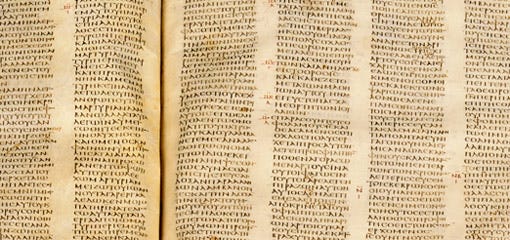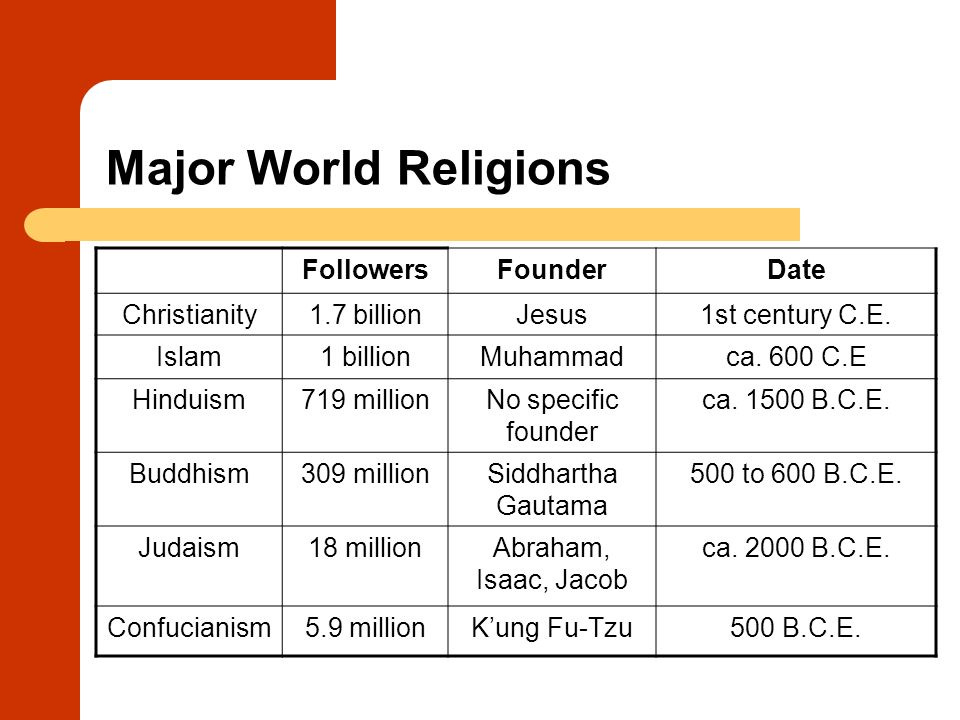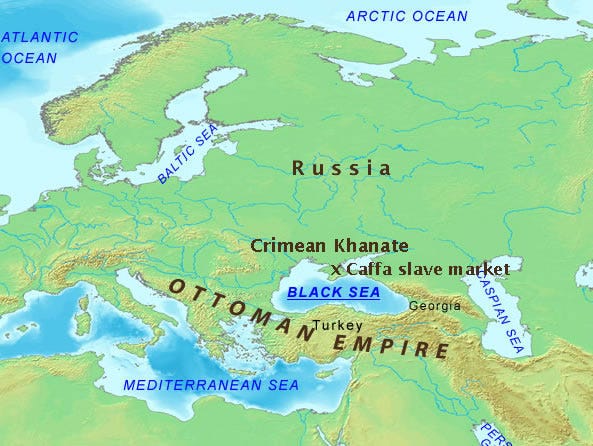By now, I hope you’ve had a chance to read Tucker’s interview with Putin along with Part One and Part Two of my summary of what I believe it really means. Here’s the next chapter. There is SO much history that impacts foreign policy even today and I want you to know the most important facts! The truth is MUCH more complex than what we’ve been led to believe.
10th Century
PUTIN: “Russia began to develop with two centers of power, Kiev and Novgorod. The next, very significant date in the history of Russia, was 988. This was the Baptism of Russia, when Prince Vladimir, the great-grandson of Rurik, baptized Russia and adopted Orthodoxy, or Eastern Christianity.” (4)
Russia was proclaimed a Christian country in 988 AD. During the 11th and 12th centuries, a powerful Russian state was built up, with its capital in Kiev, and Eastern Christianity as the official religion. The term Eastern Church was used for the Greek Church centered in Byzantium, in contrast with the (Western) Latin Church, centered on Rome, which uses the Latin liturgical rites.
The Southern city of Kiev in Russia was so prestigious back then that the Kings of France and the Princes of Germany considered it an honor to be united by ties of blood with Kievan Grand Dukes.
Intermarriage between peoples of different origins and faiths was common back then and unfettered, long distance trade began - not only with other European leaders and countries but with the Far East as well. This would be the downfall of a united Russia.
As you read on, think about the parallels with the barbarians and the fall of Rome and mass immigration in modern-day America and Europe. Think about the debate over Globalism vs Nationalism.
During this period, successful Jewish merchants, bringing precious spices and silks from the Orient to Europe, were welcomed with open arms at the court of Kiev in Russia. Jewish settlers from Jerusalem and Jewish converts from Khazaria were revered as wise and learned scholars, proficient traders and money handlers. In fact, early Christian leaders envied Jewish preachers because of their comprehensive knowledge of scripture (Hebrew Bible.)
Remember that the Christian Bible consists of the Old Testament (Hebrew Bible) and the New Testament. The Hebrew Bible on its own, however, is the religious cornerstone of the Jewish people. It was composed over several centuries and traces back to the 8th century BC.
The New Testament, however, was written after the death of Jesus in around 30 AD and completed around 95 AD. The earliest almost complete editions of the Old & New Testament weren’t published until around the 4th century.
So, by the time Russia converted to Christianity in the 10th Century, the Hebrew Old Testament had been around over 1500 years and the Christian New Testament had only been around about 500 years. That made proselytizing more difficult for early Christian leaders particularly when they were competing with learned, intelligent, and articulate Jewish scholars. More Christians and Muslims were being converted to the Jewish faith back then - rather than the other way around.
For perspective, after the invention of the printing press, the Gutenberg Bible was published in 1454 AD. It contained the Latin version of the Hebrew Old Testament and the Greek New Testament. The King James Version was one of the most well-known and influential English translations of the Bible but it wasn’t commissioned until the year 1604 AD. That changed everything for the growth of the Christian faith.
Let’s go back to 10th Century Kiev, in the South of Russia.
One of the main gates of the city of Kiev was called Gate of the Jews, and Jews had their own quarter in the town. It was not a ghetto - they spoke and lived as well as Russian elites. From the outset, the history of Kiev has been tied to that of its Jewish community. Jews flourished back then in Kiev.
Jews from Jerusalem traded with the Chinese and used the Silk Road to transport goods from Jerusalem to China. The Silk Road was a series of overland routes connecting China all the way West to Jerusalem and then to Europe. The Silk Road was the most enduring trade route in human history, used for about 1,500 years.
Religion also spread along the Silk Road. Islam and Buddhism were imported along the Silk Road and Jews were quite effective at converting Muslims and Buddhists and early Christians to Judaism all along the Silk Road. Christians started converting Jews and Muslims along the Silk Road as well. Christians and Jews and Muslims all began competing for “converts.” All religions used inter-marriage to solidify ties and conversions.
Goods traveling East to China included ammonium chloride, paper, silver, gold, glassware, and aromatics such as spices, incense, and fragrant woods. Goods traveling West out of China included bronze mirrors, other metal goods, and paper, in addition to silk. Between 300 and 1000 AD, the most important function of silk was as a currency. Unfortunately, opium (heroin) also came West from China along the Silk Road. China began using opium for medicinal purposes during the 7th century and in the 17th century the practice of mixing opium with tobacco for smoking spread West as well.
But then came the Mongol invasions, which brutally interrupted the growth of Russian civilization & the influence of the Jewish people in Kiev and Russia.
13th Century
PUTIN: “The fragmented Russian state became an easy prey to Genghis Khan & the Horde. Batu Khan came to Rus, plundered and ruined nearly all the cities. The southern part, including Kiev, simply lost independence, while northern cities preserved some of their sovereignty. (5)
Genghis Khan (1162–1227 AD) was a Mongolian warrior-ruler and one of the most famous conquerors of history. For more than 100 years, the Khan family controlled a territorial empire stretching as nine million square miles from East Asia to Europe.
He was called the first Great Khan of the Mongols.
Khan began invading neighboring lands, taking control of much of northern China, including its capital at what is now Beijing. They overwhelmed a force led by Russian Princes and ended up controlling much of the Silk Road trade network that had been built by the Jews to facilitate commerce between Jerusalem, Europe and Asia.
The Mongol Empire invaded and conquered much of Kievan Rus' and the Mongol siege and sack of Kiev is generally held to mark the end of Kievan Rus' in the Southeast. The northwest and southwest areas of Russia escaped destruction or suffered little to no damage from the Mongol invasion, including Novgorod (Moscow) - where Russia began.
The Mongols (called "Tartars" in contemporary Rus' accounts) defeated a united Rus' army. The city of Kiev was ransacked and pillaged immensely, although the Christian building of St. Sophia Cathedral survived intact.
Genghis Khan viewed white Jews and Slavs in Russia as "slaves." Jews were forbidden by the Mongols to eat Kosher. Circumcision was also forbidden. Many whites (both Jews and Slavs) fled Southern Russia (Kiev) and sought refuge in Moscow. The Mongols sold white slaves throughout Eurasia and many white slaves were shipped to the slave market in Novgorod.
The Tartars (Mongols) then resolved to "reach the ultimate sea" where they could proceed no further and invaded Hungary and Poland.

All of Russia was now ruled by the Mongols (Tartars) under Batu Khan. This period of rule by the “Golden Horde” is commonly referred to negatively by Russian historiography as the Mongol or Tatar "yoke.” The Golden Horde Tartars instituted census, taxes, and tributes on the conquered lands, which were usually collected by local Princes. The Mongols preferred to use local authorities (bureaucrats) to do their dirty work - similar to how Washington DC is run today!
14th Century
In the 14th and 15th centuries, the Mongols began massive slave raids on the Jews and white Slavic population in Moscow - and traded Russian white slaves to the Muslims in the Ottoman Empire.
This period of Mongol rule over Russia also included significant interpersonal contacts between the Slavs and Mongolian ruling classes. One important tactic Genghis Khan used in his rise to power was marriage—a powerful tool in cementing political alliances. The son of the first ruler of Moscow, a Christian, married the sister of one of the Khans - who was basically a Muslim.
At its peak, the Empire of Genghis Khan was twice the size of the Roman Empire and Muslim Caliphate and four times the size of Alexander the Great. In 1313, they proclaimed Islam as the official religion of the Golden Horde.
The Golden Horde was simply what they called the European appendage of the Mongol Empire. Later converting to Islam, the Golden Horde would meld aspects of cultures and religions from Europe, Asia, and the Middle East while ruling Russia for over two centuries.
Fearful of the Mongols destroying Moscow the same way they did Kiev, and wanting power for himself, Ivan I of Moscow - also a Christian - aligned himself with the Mongols. Because of Ivan I, the Mongols allowed the Russian Orthodox Church to move its headquarters to Moscow, and Ivan I was granted the title of Grand Prince by the Mongols.
Ivan I made Moscow the Christian spiritual center of the Russian lands and became the chief intermediary between the Mongol overlords and the Rus' lands, which paid further dividends for Moscow's rulers.
Historians argue that without the Mongol destruction of Kievan Rus', the Rus' would not have unified into the Tsardom of Russia and, subsequently, the Russian Empire would not have risen. Also, if the Mongols had not invaded Russia - what they called "oriental despotism" would not have been infiltrated into Russia.
At first, Moscow welcomed Jews as Kiev had done before. When the foundations of Christian Muscovite power were being laid, Jews streamed there; what is more, they were expressly invited to come because of their talents in commerce, trade, finance, medicine and more.
The enslavement & persecution of the Slavs and Jews by the Mongols, the Black Death and the eventual defeat of the Golden Horde in Russia, the fall of Byzantium to the Muslims, the intermingling of the Jews & Turks in Khazaria and the Christians & Mongols in Russia and the rise of Moscow as a Christian center all contributed to the next chapter in Russian history - including alliances between nations, wars and the relentless persecution (pogroms) of the Jewish people.
Constantinople, the center of the Christian Byzantine Empire, in the eastern half of the Roman Empire, finally fell to Ottoman Turkish Muslims in 1453.
The term "third Rome" refers to the question of the successor city to the "first Rome" (Rome, within the Western Roman Empire) and the "second Rome" (Constantinople, within the Eastern Roman Empire).
With the fall of Byzantium in 1453, Moscow emerged as the principal center of Greek Christian Orthodoxy, and Greek scholars proclaimed that it was destined to become the “Third Rome.” Christian rulers in Moscow would do anything to make that happen!
The importance of upholding the image of a Christian Russia (with Moscow as its center) in determining policy increased from century to century in Russia. In the name of becoming the “Third Rome” - Christian Russia expanded its territory and even dreamed of reconquering Byzantium from the Turks.
We’ll review that and more in Part 4 - along with the origins of liberal PROGRESSIVISM and its goal to destroy Judaism & Christianity in the West.
If you’ve gotten this far - you are probably saying to yourself - why wasn’t I taught this before? I wondered the same thing as I went through the historical record to try to piece together what really happened. The truth is much more complex and interwoven than we’ve been led to believe - and the more I look at the big picture - the more I see God’s hand in everything!












